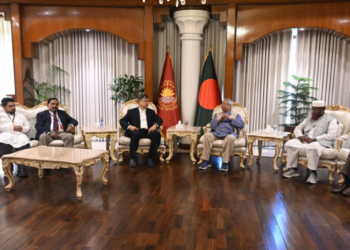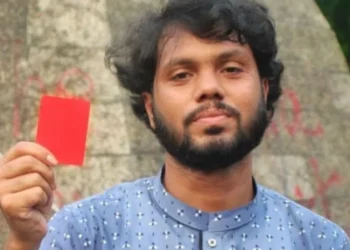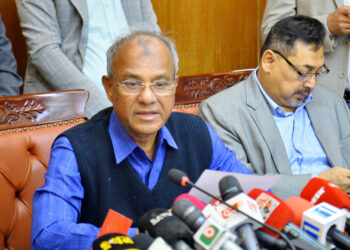Grameenphone, a pioneering telecommunications company in Bangladesh, has played a transformative role in the nation’s digital evolution. Established with the vision of “communication for all,” the company has evolved from a rural connectivity initiative to the country’s largest telecom operator. Grameenphone is not just a telecom company, it represents the journey that Bangladesh is taking towards the path of digital empowerment. Even the name of the company “Grameenphone” reflects its rural outreach. The word “Grameen” means “Rural” in Bengali, representing the company’s core mission to connect rural areas, where services were previously undeveloped.
As of April 2025, Yasir Azman has been serving as the CEO of Grameenphone since February 1, 2020. Yasir Azman served the role of CMO of Grameenphone in June 2015 and also worked as Deputy CEO of the company since May 2017. Before this, Azman was Head of Distribution and eBusiness at Telenor Group and was involved across all the Telenor operations.
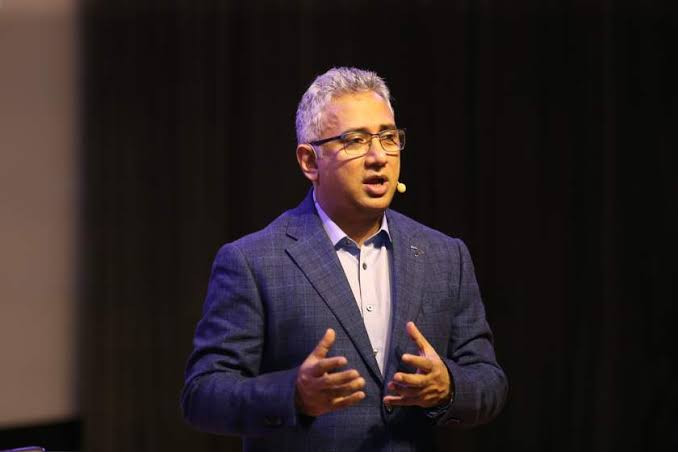
The Vision Behind Grameenphone
Professor Iqbal Quadir is a renowned Bangladeshi entrepreneur, educator, and visionary who is widely recognized for his pioneering role in the telecommunications industry.He is the Founder of Grameenphone, the largest mobile phone service provider in Bangladesh.His inspiration for Grameenphone, were the communication needs of the majority low-income rural population of Bangladesh who had limited access to communication infrastructure. His vision was to bring an affordable mobile connectivity to people in these underdeveloped areas, so they can access information, commerce and better their life.

The Origin Story
In the late 1990s, Quadir reached out to Dr. Muhammad Yunus, founder of Grameen Bank, who was already an established figure in microfinance and social entrepreneurship.Together, they conceived the idea of using mobile phones as tools for economic empowerment, starting with a rural-based model that would make telecommunication services accessible to everyone, even in the most remote villages.One of GP’s first initiatives, the “Village Phone Program,” gave mobile phones to rural women entrepreneurs who could make money by offering phone services in their local communities. With this microcredit-backed model, GP was able to spread mobile access to rural regions that no other telecom player would touch.
- Founded: 1997
- Ownership: Telenor Group (55.8%), Grameen Telecom (34.2%), Institutional and Public Shareholders (10%)
- First service launched: March 26, 1997 (Independence Day of Bangladesh)
Growth and Market Leadership
Grameenphone grew rapidly from its modest beginnings:
Subscriber Growth: As of 2024, Grameenphone boasts over 80 million subscribers, making it the largest telecom operator in the country.
Network Coverage: Over 99% population coverage with 2G, 3G, and 4G LTE services.
Digital Expansion: Introduction of MyGP app, GPAY, FlexiPlan, and IoT-based business solutions.
GP’s ability to combine technology, strategy, and local relevance has made it a market leader in a highly competitive industry.
Read More: Boycotting Israeli Products: Strategic Global Substitutions and Socioeconomic Impacts on Bangladesh
Major Challenges, Ups & Downs: How Grameenphone Tackled Them
Grameenphone (GP), the market leader, has also seen highs and lows. From regulatory wrangling to network outages, its path has been full of challenges that proved its expansion. Below are key challenges with real examples as well as how Grameenphone strategically managed to overcome them:
Regulatory Disputes and Tax Controversy:
In 2019, the Bangladesh Telecommunication Regulatory Commission claimed BDT 12,579 crore from Grameenphone due to 1996 audit disputes. The business was forced to stop issuing new SIM cards, and its reputation was damaged.
How GP tackled it
- Initiated legal action and entered negotiations with BTRC.
- Paid a partial amount (BDT 2,000 crore) as a gesture of goodwill.
- Resolved the issue through court-mediated settlements, maintaining operational continuity.
Impact: Though temporarily affected, GP regained the ability to operate normally and reinforced its reputation for compliance and negotiation diplomacy.
Network Outages and Quality Complaints:
Most recently, a nationwide disruption hit the network of Grameenphone, in June 2023, because of the damage to its fiber due to road construction. Users reported call drops and data lags, sparking criticism on social media.
How GP tackled it:
- Issued public apologies via press releases and social media.
- Deployed emergency field teams to repair network links within 24 hours.
- Invested in AI-based predictive maintenance tools to reduce future outages
Impact: While the incident temporarily affected customer trust, GP’s rapid response and transparency helped rebuild confidence quickly.
Competitive Pressure in Pricing:
In 2022–2024, Robi and Banglalink offered cheaper data packs, cashback, and bundled services, attracting price-sensitive youth users and putting pressure on Grameenphone’s premium pricing model.
How GP tackled it:
- Introduced FlexiPlan, allowing users to customize voice, data, and validity.
- Launched youth-focused packs with TikTok, Facebook, and YouTube bundles.
- Strengthened MyGP app loyalty programs with GP points, rewards, and discounts.
Impact: GP retained a loyal user base by offering value without directly engaging in a price war—smartly preserving its premium brand identity.
Macroeconomic Challenges and Foreign Exchange Losses:
The depreciation of the Bangladeshi Taka (BDT) in the year 2023–2024 increased expenses during importing equipment and licensing fees in USD.This resulted in foreign exchange losses and squeezed profit margins.
How GP tackled it:
- Increased investment in local vendor partnerships to reduce import dependency.
- Enhanced cost-efficiency through network sharing agreements with competitors.
- Streamlined operations and adopted green tech to lower energy costs.
Impact: Despite financial pressure, Grameenphone reported a 30% profit jump in Q1 2024 by focusing on local solutions and smart financial planning.
Digital Disruption and Changing User Behavior:
The rise of OTT platforms (WhatsApp, Messenger, IMO) reduced the need for traditional voice calls and SMS, affecting GP’s core revenue sources.
How GP tackled it:
- Pivoted towards data-driven offerings: special video streaming packs, OTT bundles.
- Launched “gpfi” wireless home internet to enter the broadband market.
- Invested in 5G readiness and IoT business solutions for future-proofing.
Impact: Grameenphone successfully shifted its focus from voice to data and diversified its revenue sources.
Social Backlash & Corporate Responsibility
In early 2023, GP faced criticism for not doing enough in rural digital literacy. NGOs and civil society groups raised concerns over the digital divide.
How GP tackled it:
- Initiated “Digital Inclusion” initiative with training for rural women, school students and small entrepreneurs.
- Collaborated with BRAC with other NGOs to raise awareness on internet safety and prevent online fraud
Impact:GP received favourable recognition from the general public and government, reconfirming its dedication to inclusive growth and sustainable development.
Read More: Pickaboo and the Rise of E-Commerce in Bangladesh: A Digital Retail Revolution
Brand Identity and Customer Loyalty
Grameenphone (GP) has successfully built one of the most recognizable and trusted brands in Bangladesh’s corporate landscape. Its identity is rooted in quality service, technological innovation, and a deep emotional connection with its users.
Brand Slogan: “Go Beyond”
Grameenphone’s slogan, “Go Beyond,” reflects its core philosophy of pushing boundaries—not just in technology, but also in service, connectivity, and societal impact.
In 2024, GP collaborated with numerous OTT platforms for live streaming of the Cricket World Cup via the MyGP app and opened up new possibilities for fans across Bangladesh to “go beyond” the viewing options available before them. This improved user experience further positioned GP as more than a telecom operator, but rather a digital lifestyle enabler.
Customer-Centric Innovations
Grameenphone has always prioritized customer convenience and personalization.
MyGP App
The MyGP app is used by over 20 million monthly active users and offers a full digital experience, including bill payments, data customization, real-time balance updates, live sports streaming, and even emergency balance—all without requiring internet balance.
During the COVID-19 lockdowns, Grameenphone used the MyGP app to stream live school classes, ensuring continued access to education for thousands of students nationwide.
GPStar Loyalty Program
This loyalty program rewards long-time users with exclusive privileges, such as:
- Priority service at GP centers
- Special travel and shopping discounts
- Early access to new packages
In 2023, GPStar partnered with Daraz to offer exclusive early access to major sales events and personalized promo codes—turning telecom loyalty into e-commerce benefits.
3. Awards and Recognitions
Grameenphone’s brand strength has been repeatedly recognized by national and international institutions.
Asian Technology Award 2024: GP won in the Digital Telecommunications category for its innovation with the MyGP App, which transformed mobile experience across the country. The award highlighted how MyGP had become a one-stop platform—not just for telecom services, but also for accessing entertainment, paying utility bills, and managing mobile finance.
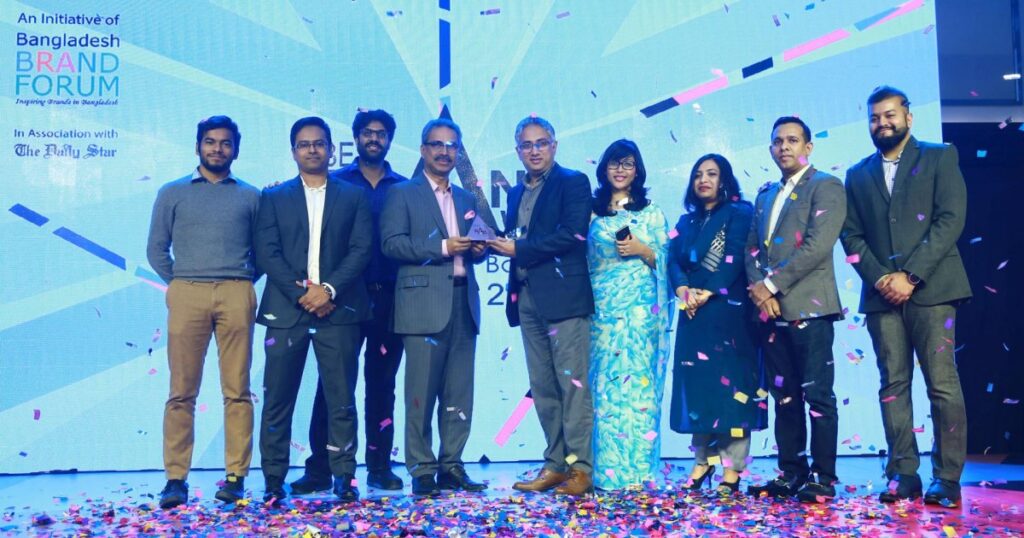
Digital Marketing Awards 2023: GP won 25 awards, including 6 Golds, for its creative digital campaigns. The “Bondhu Bojhe Amake” campaign alone won 10 awards, proving Grameenphone’s strength in emotional branding and youth engagement.
Socio-Economic Impact
Grameenphone’s influence extends far beyond telecom:
- Employment: Directly employs thousands and indirectly supports hundreds of thousands via retail outlets and call centers.
- Empowerment: Enabled financial inclusion, remote education, and access to information in underserved areas.
- CSR Initiatives: Projects like “Internet for All,” disaster relief programs, and partnerships with BRAC and JAAGO for education reflect GP’s strong corporate responsibility ethos.
One of the most iconic contributions remains the original Village Phone Program, empowering rural women with entrepreneurship opportunities.
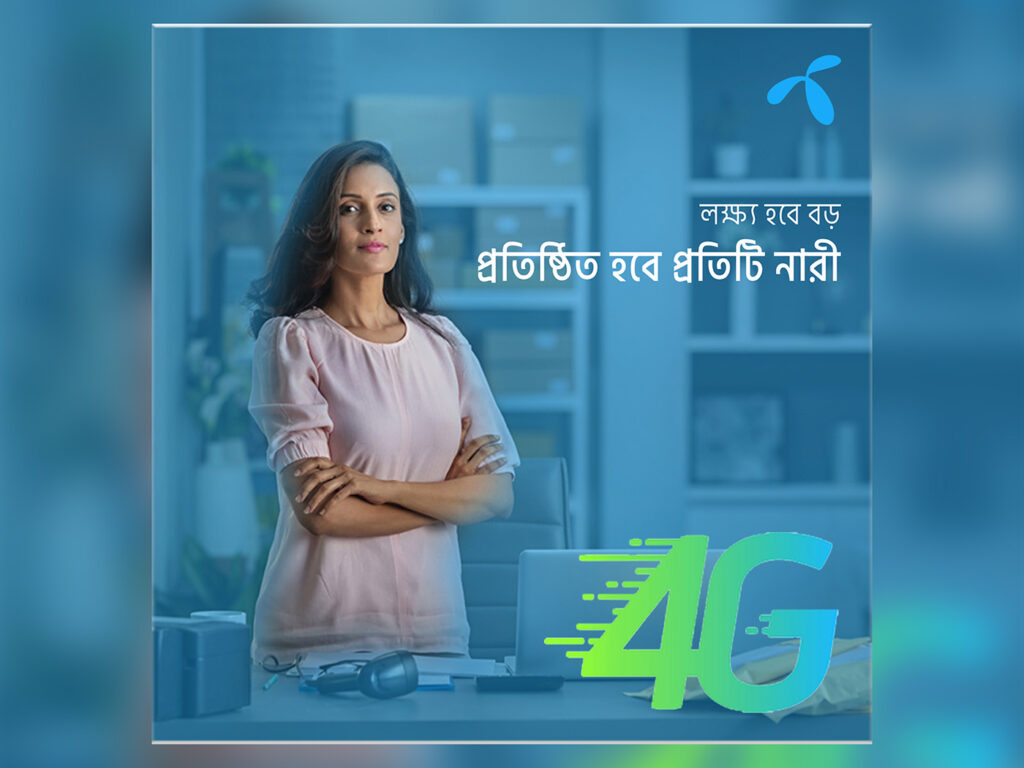
Future Outlook: What Lies Ahead for Grameenphone
Grameenphone is now eyeing:
5G integration: Grameenphone is gearing up to roll out 5G services, promising ultra-fast internet speeds, minimal latency, and seamless connectivity. Pilot testing is already in development, with focus areas Smart healthcare (e.g., remote surgeries and diagnostics), Smart manufacturing and automation, Real-time education and immersive AR/VR experiences.
Example: In 2024, Grameenphone partnered with global tech vendors to test 5G-enabled smart classrooms in select urban schools, showcasing the educational potential of this next-gen technology.
AI-powered customer services: GP plans to scale up AI-driven chatbots, voice assistants, and predictive support models to enhance customer experience and reduce wait times.
Example: GP is piloting AI tools that analyze customer behavior to recommend the best data plans based on browsing history—transforming support into a proactive service.
Deeper penetration into digital financial services: With Bangladesh’s digital finance ecosystem booming, Grameenphone is looking to deepen its reach in this sector through: Mobile wallet integration (e.g., Nagad partnership), Micro-loans and savings features, Insurance and bill payments directly via MyGP
Example: In 2024, GP launched a pilot program offering micro-insurance services to rural users via SMS-based activation, in collaboration with a local fintech startup.
Rural digitization and smart city collaborations: Staying true to its roots, Grameenphone is doubling down on efforts to bridge the rural-urban digital divide while also contributing to urban innovation.
Example: GP is working with Dhaka North City Corporation to implement smart traffic lights and digital signage systems powered by mobile IoT networks.
Conclusion
Grameenphone is more than a telecom company—it is a national enabler. From rural phones to smart digital solutions, GP’s evolution reflects the story of Bangladesh’s own digital transformation. Its journey—marked by innovation, impact, and integrity—sets a benchmark in corporate excellence and social responsibility. If the future belongs to the connected, Grameenphone is building that future today.
References
Share via:











